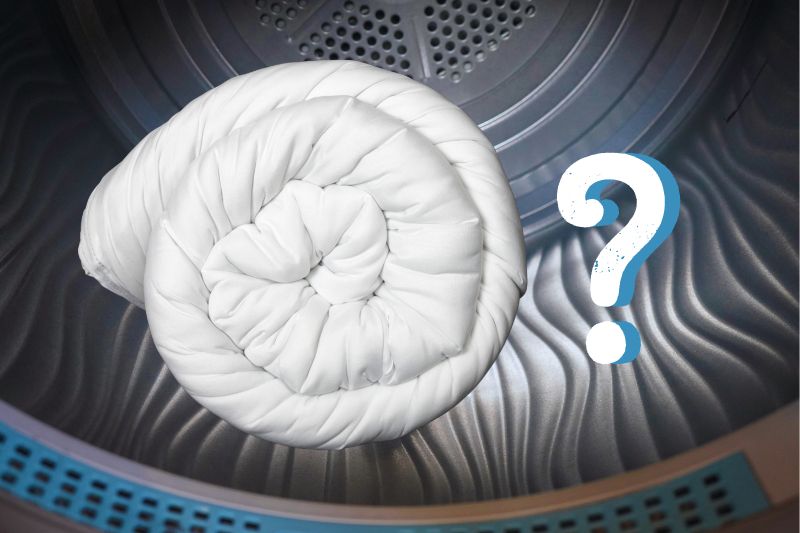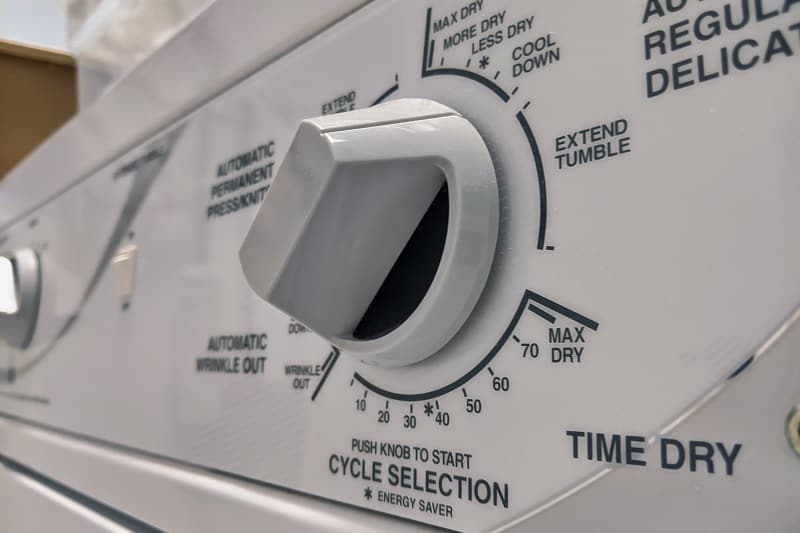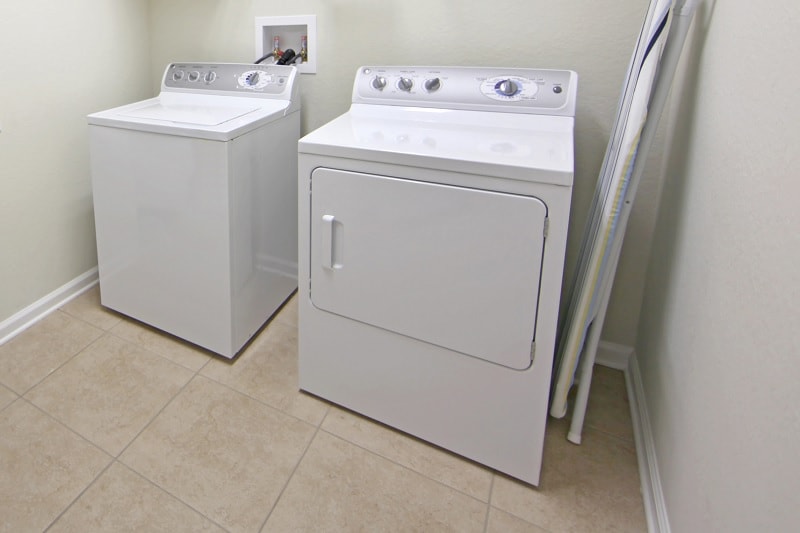When we go to bed at night, we all want our bed to be fresh and snuggly. An essential part of that is regularly washing your bedding.
By now, washing and drying your bed sheets is likely second nature. But what about your duvet?
A duvet is one of the most integral parts of your bedding set, yet many people are unsure how to care for it properly.
In fact, it’s common for duvets to come out of the wash looking flat and clumpy. The way to combat this is to change your drying technique so your duvet can be properly fluffed up.
So what is the best drying method? Can you tumble dry a duvet? Or is air drying the only way to go? In this article, we answer all these questions and more! Read on for our comprehensive guide.
Can You Put a Duvet in the Tumble Dryer?

You can indeed put most duvets in the tumble dryer. This is the quickest and easiest way of drying a duvet.
In fact, many duvet manufacturers recommend tumble drying synthetic duvets as this makes sure they are completely dry before you use them again!
Before you go ahead, though, it is essential that you check two things:
- Care label instructions: You must check the care label on your duvet. Certain duvet fillings, such as feathers and down, can be quite susceptible to damage in the dryer, so some manufacturers may advise against drying your duvet this way. They may also be dry clean only, in which case they must be taken to a professional to be cleaned.
- Dryer capacity: It’s also essential that you consider your tumble dryer’s capacity. When your duvet is loaded into the dryer, the drum should only be 2/3 of the way full. This gives your duvet the space to move around freely during the dry cycle, resulting in more even drying. If your dryer is too small, you can always take it to a laundrette instead.
How To Dry a Duvet in the Tumble Dryer
Once you’re certain that your duvet is safe for tumble drying, you can then follow the below instructions:
- Place your duvet into the tumble dryer as soon as it has completed a full wash cycle. Don’t load any other items in with the duvet, as this could lead to tangling.
- If desired, add a few dryer balls into the drum and then shut the door (see below for recommendations).
- Select the lowest heat setting on your dryer and start a 30-minute drying cycle. This will dry your bedding without causing damage.
- Once the cycle has finished, remove the duvet from the dryer and manually fluff the filling to help remove any clumps.
- If the duvet is still wet, repeat steps 3 and 4 until it has dried all the way through. It is important to dry it completely to prevent mould or mildew from forming.
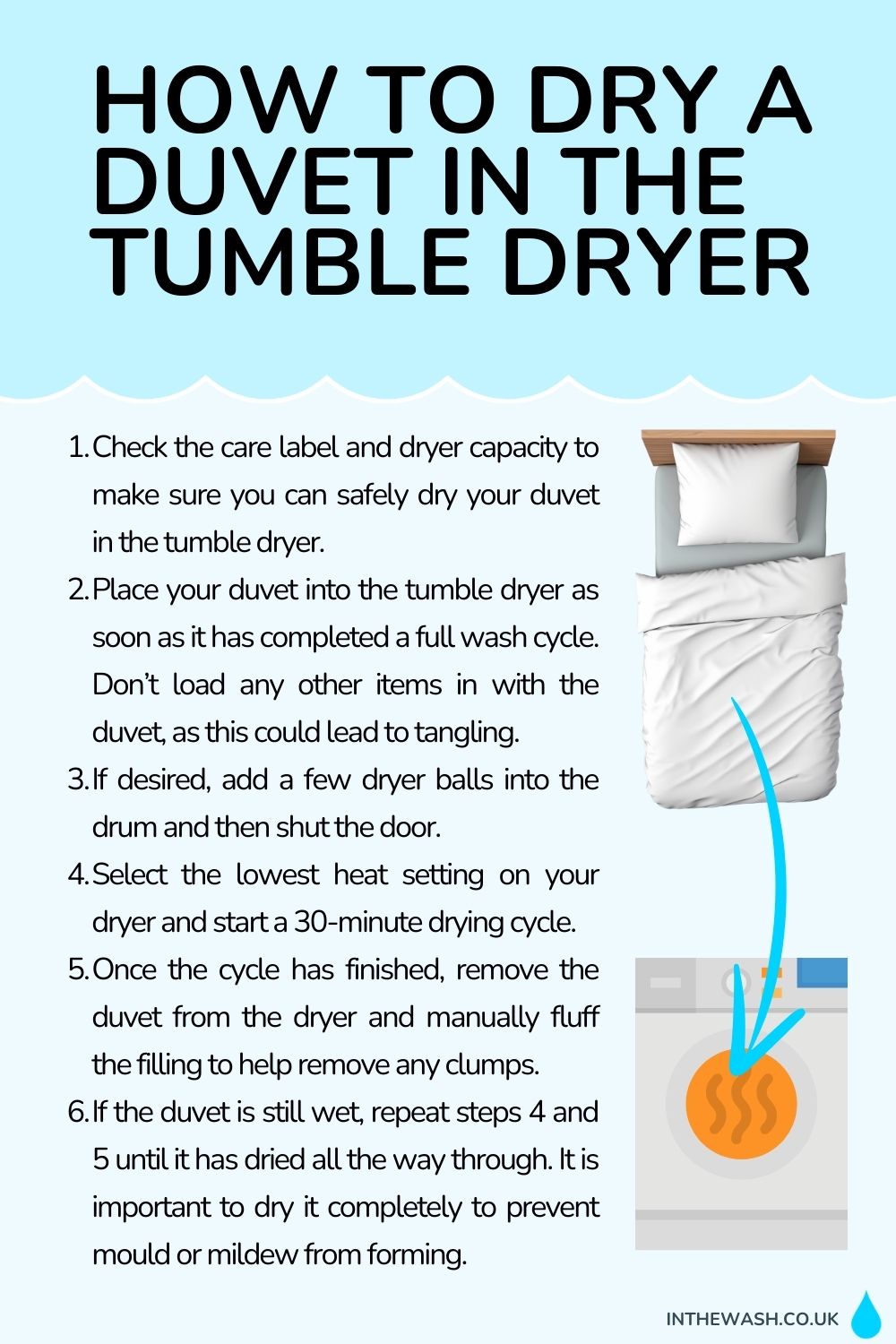
How to Prevent a Duvet from Bunching Up in the Dryer
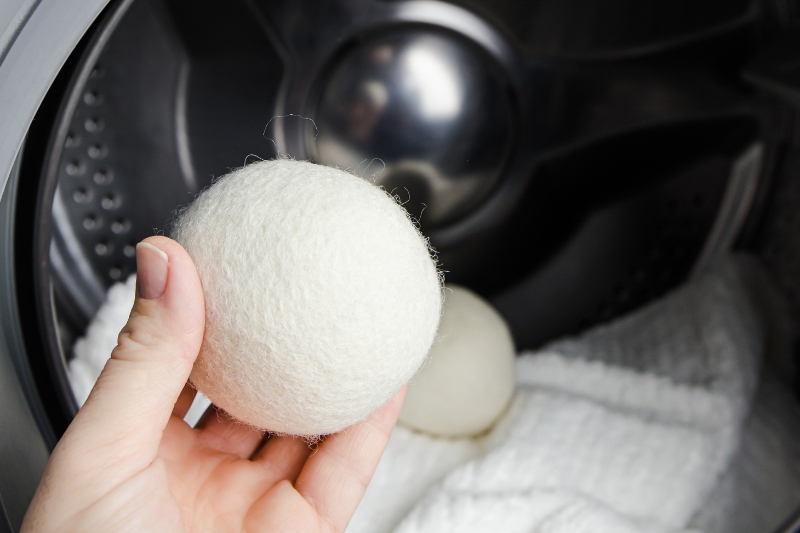
Clumping is one of the main issues with drying a duvet in the tumble dryer. Thankfully, there is a quick and easy fix: use dryer balls.
Investing in some dryer balls is a wise option if you use your tumble dryer for many larger items, such as quilts, bedsheets, and bath towels.
These balls are designed to separate your laundry while it is in the dryer, speeding up drying times and preventing your duvet from bunching up or forming clumps.
Simply add 2 or 3 dryer balls to the tumble dryer alongside your duvet and then proceed with the instructions laid out earlier.
There are two main types of dryer balls, organic and rubber/plastic, so you may want to test some to find which works for you. Alternatively, use tennis balls as a substitute if you need a quick fix.
Organic dryer balls
Organic dryer balls are usually made from wool, which has been felted to produce dense ball shapes.
They can be plain in colour or feature novelty animal designs. We would generally recommend the plain white dryer balls, as there will be no possibility of colour transference.
Some great brands that you can try include:
Rubber or plastic dryer balls
Rubber and plastic dryer balls are the most common type available on the market. They usually feature a knobbly texture which helps to aerate your washing, and are the best choice for anyone that suffers from sensitive skin.
Cheaply manufactured dryer balls can be prone to splitting, so you might want to invest in a well-known brand to maximise their use.
There are also novelty-shaped dryer balls on the market, which could be a fun idea if your kids regularly help you with laundry. Two of our favourite products are:
What’s the Best Way to Dry a Duvet?
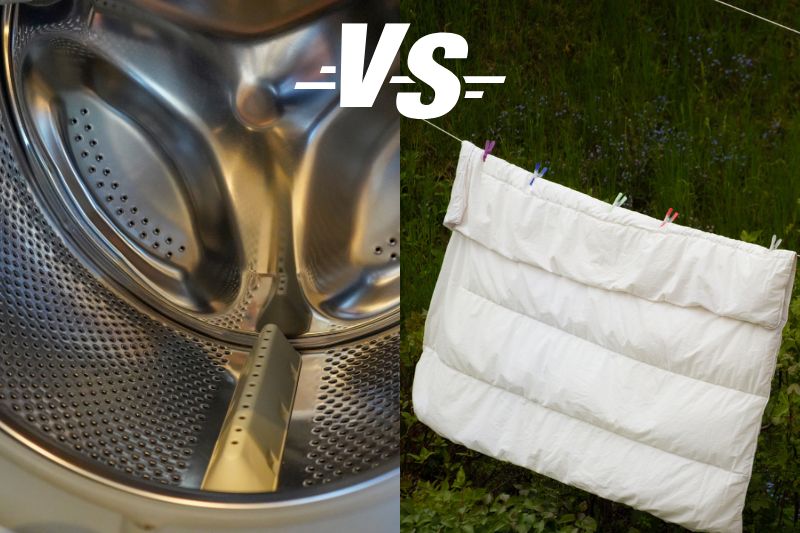
You can dry most duvets in the tumble dryer, but should you? What is the best way to dry a duvet?
If your duvet is tumble dryer-safe and your appliance is large enough, tumble drying is certainly the quickest way to dry your duvet.
However, air drying is a viable option if you have the space. While much more time-consuming, it is less likely to cause damage. It’s also the only option if your duvet cannot be tumble dried.
Therefore, whether you use to use a tumble dryer or an air-drying technique is entirely up to you. It depends on the type of duvet, the size of your tumble dryer, the amount of drying space available, and the amount of time you have on your hands.
How to Air Dry a Duvet
If you decide to air dry your duvet, the process is simple: hang it up in a well-ventilated area out of direct sunlight.
We recommend flipping the duvet over every 2 hours or so to ensure that both sides dry evenly. At this time, it is also a good idea to re-distribute the filling to stop clumps from forming.
As duvets can be quite large, finding a large enough space to hang them in is often challenging.
Some places you can use include:
- An outdoor clothesline
- An indoor airer
- The top of an open door
- Along a curtain pole
- Over the side of a balcony
Before hanging your duvet in any of these places, ensure you quickly clean the surface. This will remove any accumulated dirt or debris that could transfer to the fabric of your duvet as it is drying.
How Long Does It Take to Air Dry a Duvet?
Air drying a duvet typically takes 18-20 hours, but in some cases, it can take up to 24 hours for the duvet to dry all the way through.
This will differ slightly depending on the specifications of your duvet (filling, thickness, size, etc.) and what the temperature is like on that particular day. However, it is extremely rare for a duvet to dry fully within a matter of hours.
Compared to the rest of your bedding set, this may seem like a drastically long drying time. The reason for this is the thousands of little air pockets that can be found inside your duvet.
These air pockets increase the insulation of your duvet, but they also trap water when it is washed. This water must fully evaporate before your duvet can be used.
If you need to speed up this drying process, there are a few things you can use:
- Radiator: Try hanging your duvet near a radiator so that the surrounding heat can evaporate the moisture within your duvet at an increased rate. Never hang your duvet directly on the radiator, as this will cause damage and is a fire hazard.
- Portable heater: A portable heater can be used in the exact same way as a radiator but with the added bonus of being able to move it to where your duvet is hanging. Always allow at least 60 cm between your duvet and the heater to be safe.
- Hairdryer: If all else fails, you can slowly run a hairdryer over your duvet to speed up the drying process. Simply lay your duvet out flat and keep the hairdryer 6-8 inches away from the fabric at all times for the best result. Once you’ve dried one side of the duvet, flip it over and repeat the process.

Hannah has a passion for cleaning. She worked her way around Australia by cleaning hostels in exchange for free accommodation and used her cleaning skills to bag a job as a chalet host for a luxury ski company in France.
